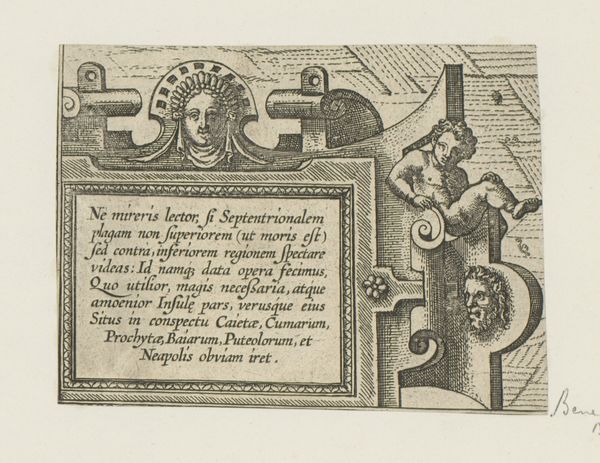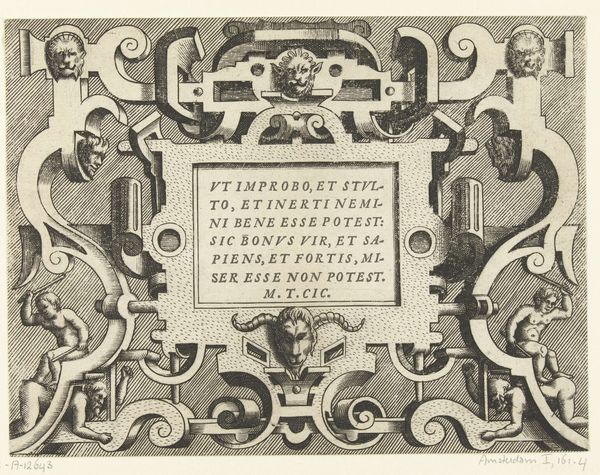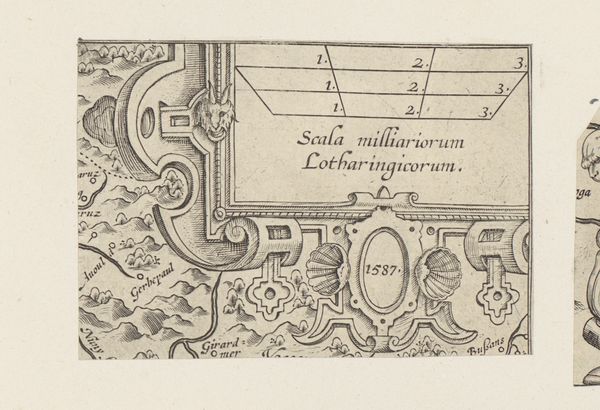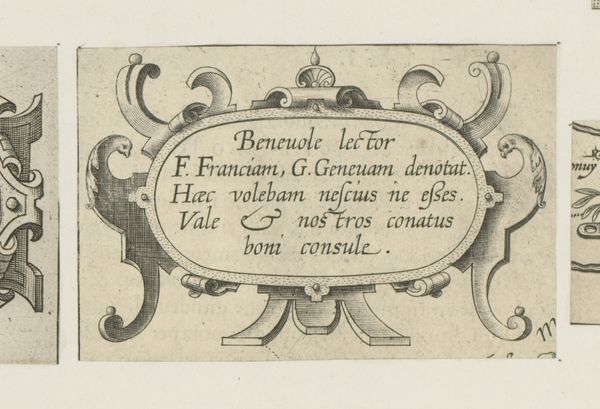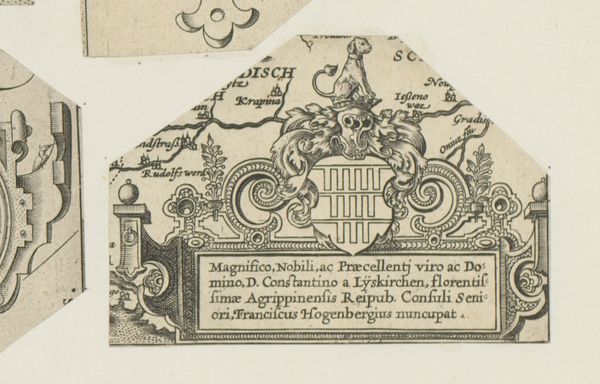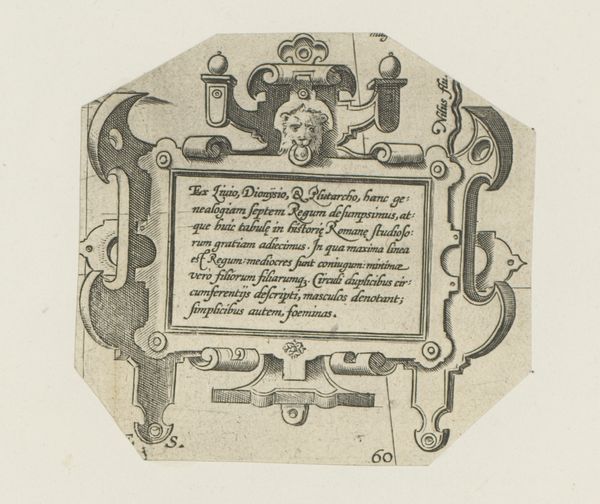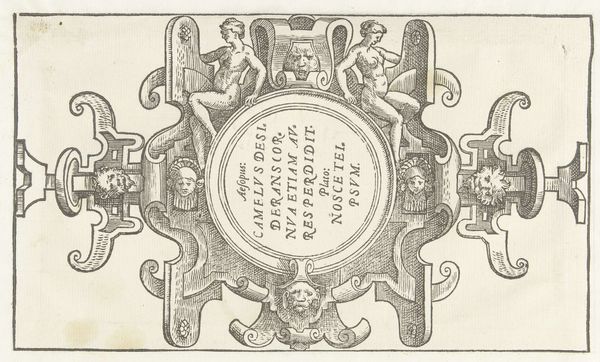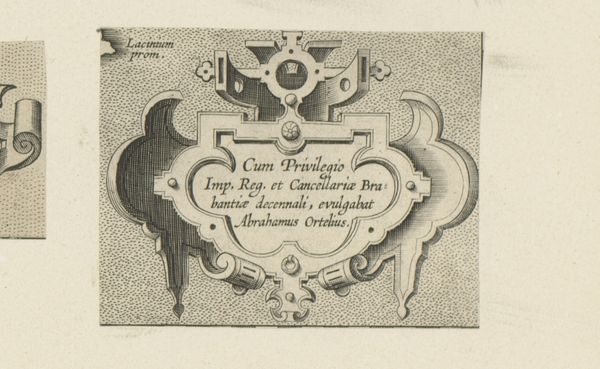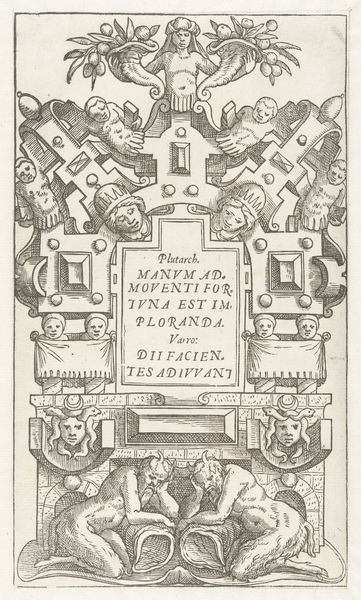
graphic-art, print, engraving
#
graphic-art
# print
#
11_renaissance
#
engraving
Dimensions: height 66 mm, width 97 mm
Copyright: Rijks Museum: Open Domain
Curator: Immediately, the engraving feels so precise. Look at the density of those fine lines, the way they build form with such delicate variations in tone. Editor: And it speaks volumes about the rise of cartography and its role in solidifying power in the late 16th century. This is "Half Round and Rectangular Cartouche with Scrollwork," created around 1595 by an anonymous artist, now residing here at the Rijksmuseum. Curator: Those meticulously rendered scrollwork elements draw the eye. I'm intrigued by how the artist utilizes a relatively limited range of materials—just the copper plate, the ink, and paper—to achieve this illusion of depth and texture. Editor: The cartouche itself functions as a symbolic frame, doesn't it? Highlighting the emerging importance of geographical knowledge. These maps were becoming increasingly valuable, not just for navigation but as tools of statecraft and commerce. It also provided patronage to support artist collectives. Curator: Right. You see, the act of creating these kinds of prints involved skilled labor. There's a whole history of craft and workshop production embedded within that single image. Editor: Consider the historical context: Europe in the midst of expansion, both intellectually and geographically. The printed image was key for communicating these developments. This cartouche provides the means for dissemination to happen and legitimizes it for broader audiences. Curator: It also presents an intriguing question about how art elevates something very utilitarian and practical into a space that is appealing. Editor: Precisely! And to think this was reproduced multiple times, passed among hands, influencing perceptions of place and power...It really makes you consider the profound role these types of prints played at that time. Curator: Well, for me, it underscores how fundamental an understanding of materials is for gaining perspective on broader culture. Editor: A fitting reminder of art’s many dimensions, from the immediate object to the historical forces it embodies.
Comments
No comments
Be the first to comment and join the conversation on the ultimate creative platform.
